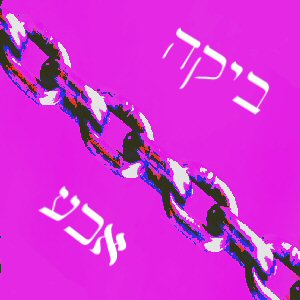Variation in the Text of the Zohar
Variation in the Text of the Zohar
By
James Scott Trimm
One of the difficulties with studying the Zohar is that there is no standardized text of the Zohar. The manuscripts of the Zohar contain many variants as do the earliest printed editions.
The first two printings of the Zohar were published by competing printers in neighboring cities of Mantua (1568-60) and Cremona (1559-60) in Italy. The two editions were based on different manuscripts and had differences in order and in specific readings.
The Mantua edition was published in three volumes in Rashi Script and was based upon ten different manuscripts. The Cremona edition was published in a single volume in square script and was based on six manuscripts. In each case the editor followed those readings he felt were most accurate.
Another important edition of the Zohar was printed in Amsterdam in 1714 which was based largely on the Mantua Text but with many variants, some taken from the Cremona Text.
There are also several other early editions of the Zohar including Lublin in 1623, Venice 1658, Sulzbach in 1684 and Constantinople in 1736.
The Amsterdam edition was the primary Zohar of the early Hasidic movement, being the popular edition in Germany and Poland beginning in 1714 (republished in 1805). It is also the edition used by Rabbi Tzvi Nasi in his book The Great Mystery: How Can Three Be One?
The popular five volume English translation published by Soncino Press states in its introduction that it:
“has been made in the main from the Mantuan text of the Zohar,
but occasionally a reading has been adopted from the Amsterdam text.”
(Vol. 1 p. xxx)
Davka publishes an e-version of this translation linked to the original Aramaic, but the Aramaic text used does not always agree with the English translation.
For example, at the top of 1:16b in the Davka edition of the Soncino English text we read:
[Note: The first 27 lines of the English translation do not correspond to the Hebrew text.
Line 28 of the English text corresponds to the passage beginning on line 5 of the Hebrew text.]
Much work needs to be done in this area of variant Zohar readings, as there are many undiscovered treasures yet to be found in the Zohar.
By
James Scott Trimm
One of the difficulties with studying the Zohar is that there is no standardized text of the Zohar. The manuscripts of the Zohar contain many variants as do the earliest printed editions.
The first two printings of the Zohar were published by competing printers in neighboring cities of Mantua (1568-60) and Cremona (1559-60) in Italy. The two editions were based on different manuscripts and had differences in order and in specific readings.
The Mantua edition was published in three volumes in Rashi Script and was based upon ten different manuscripts. The Cremona edition was published in a single volume in square script and was based on six manuscripts. In each case the editor followed those readings he felt were most accurate.
Another important edition of the Zohar was printed in Amsterdam in 1714 which was based largely on the Mantua Text but with many variants, some taken from the Cremona Text.
There are also several other early editions of the Zohar including Lublin in 1623, Venice 1658, Sulzbach in 1684 and Constantinople in 1736.
The Amsterdam edition was the primary Zohar of the early Hasidic movement, being the popular edition in Germany and Poland beginning in 1714 (republished in 1805). It is also the edition used by Rabbi Tzvi Nasi in his book The Great Mystery: How Can Three Be One?
The popular five volume English translation published by Soncino Press states in its introduction that it:
“has been made in the main from the Mantuan text of the Zohar,
but occasionally a reading has been adopted from the Amsterdam text.”
(Vol. 1 p. xxx)
Davka publishes an e-version of this translation linked to the original Aramaic, but the Aramaic text used does not always agree with the English translation.
For example, at the top of 1:16b in the Davka edition of the Soncino English text we read:
[Note: The first 27 lines of the English translation do not correspond to the Hebrew text.
Line 28 of the English text corresponds to the passage beginning on line 5 of the Hebrew text.]
Much work needs to be done in this area of variant Zohar readings, as there are many undiscovered treasures yet to be found in the Zohar.

Comments
Post a Comment